As the Head of Business Development at Doist, I’ve spent the last few weeks talking with team leaders who have suddenly been forced to “go remote”. I’ve learned from these conversations that there are some relatively small changes companies, managers, and individuals can make that will have massive effects on productivity, teamwork, morale, and sanity.
None of this is rocket science — any team, any company, and any individual can make the leap to remote work. But it does require challenging some entrenched habits and mindsets and building new ones to take full advantage of what remote work has to offer, while minimizing the downsides.
If you’re optimizing your team and workflow for long-term remote work, then your best bet is to dive straight into our in-depth Remote Work guides and other remote work articles. But if you’re making a sudden — and possibly temporary — transition to remote work, this article will cover the practical tips I’ve learned over the last decade working remotely that any company, team, manager, or employee can put into practice right away.
For managers, leaders, & decision-makers
If you find yourself suddenly managing a team that was once in the office, but is now working from home, this section is for you.
Trade time tracking for trust
One of the first questions new or aspiring remote team leaders always ask me goes something like this: “I want to make sure my employees are actually working, how can I best track their performance?” Implied in this question is the assumption that employees will take advantage of the situation by doing the least amount of work possible.
My answer, which managers usually don’t expect to hear, is: you have to start with trust.
Don’t waste valuable time, energy, and resources setting up systems to track employees’ every hour spent working. Hours worked is a terrible measure of productivity. While office-bound employees “clock in” for an 8-hour workday, they usually average about 3 hours of “real work” on any given day.
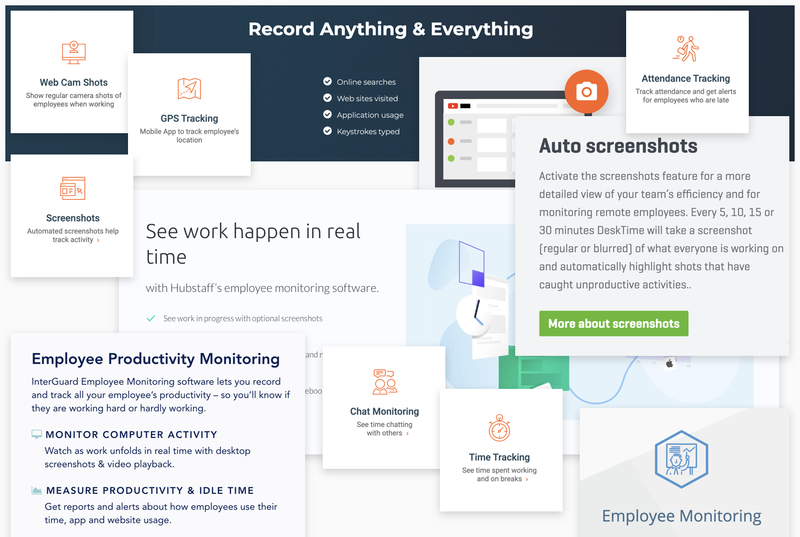
Trying to create a mini surveillance state or expecting people to respond to messages within 5 minutes to prove they’re “at work” is only going to alienate your workforce and get in the way of them actually doing their jobs.
Instead, default to trusting that you’ve hired the right people and that they’re capable of working at a high level, whether or not they’re in an office.
Trusting by default isn’t carte blanche. Remote work requires individual accountability or everything falls apart. But if someone misses a deadline or you feel they aren’t getting enough done, give them the benefit of the doubt — especially under current circumstances, and particularly if they have young children at home too. Even seasoned remote workers are currently struggling to be as productive as normal. Approach managing remote employees from a place of empathy. Don’t assume bad intentions.
So if time tracking and activity monitoring isn’t the answer, what should you be focusing on instead?
Focus on outputs over inputs
New remote team leads tend to emphasize inputs as a measurement of productivity — things like hours worked, emails sent, calls made, message response time. These metrics are easy to see and quantify, making us managers feel secure that we’re getting the most out of our employees.
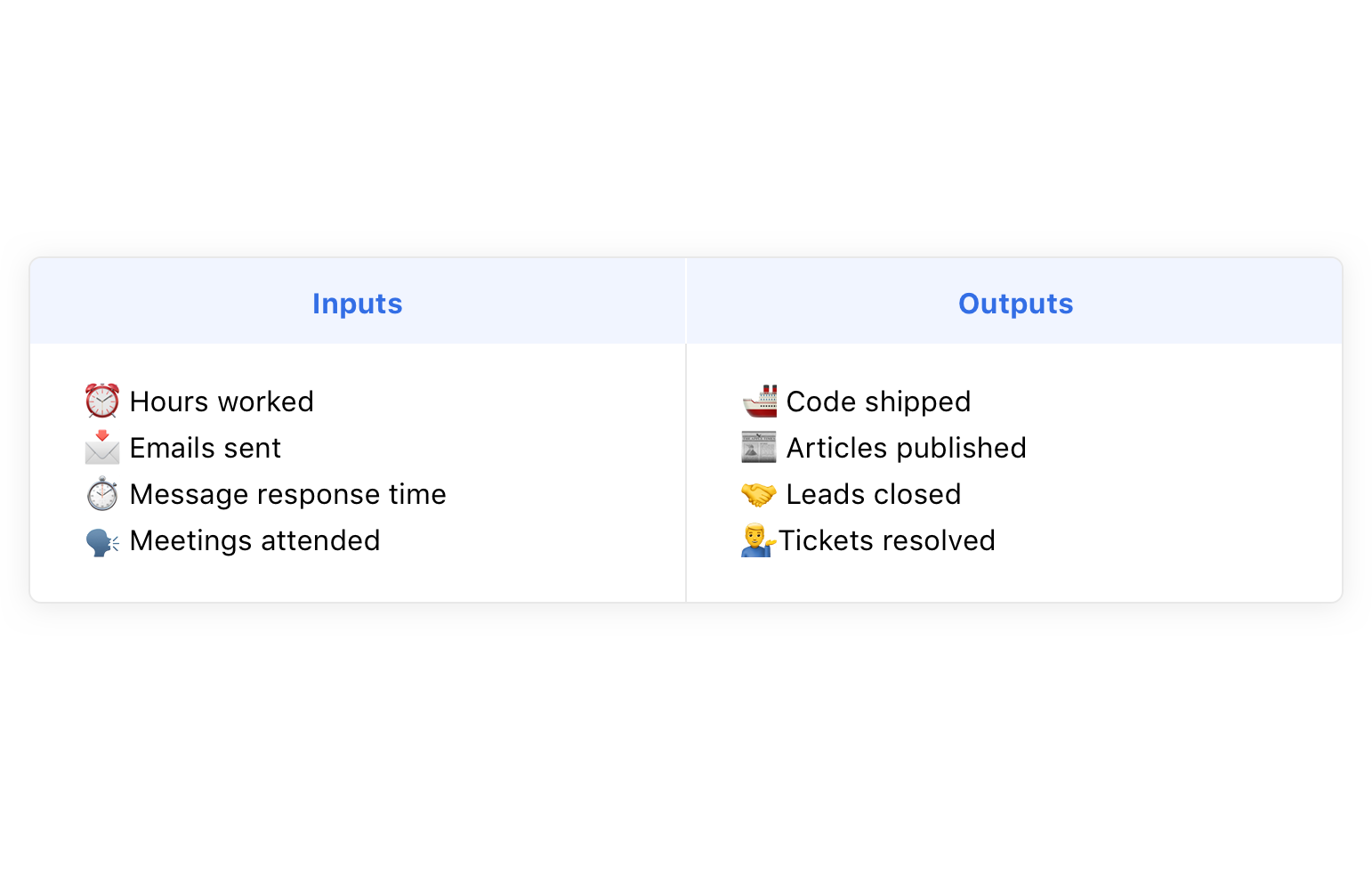
In reality, focusing on inputs leads to constant interruptions, busywork, and burnout, more often than stellar results.
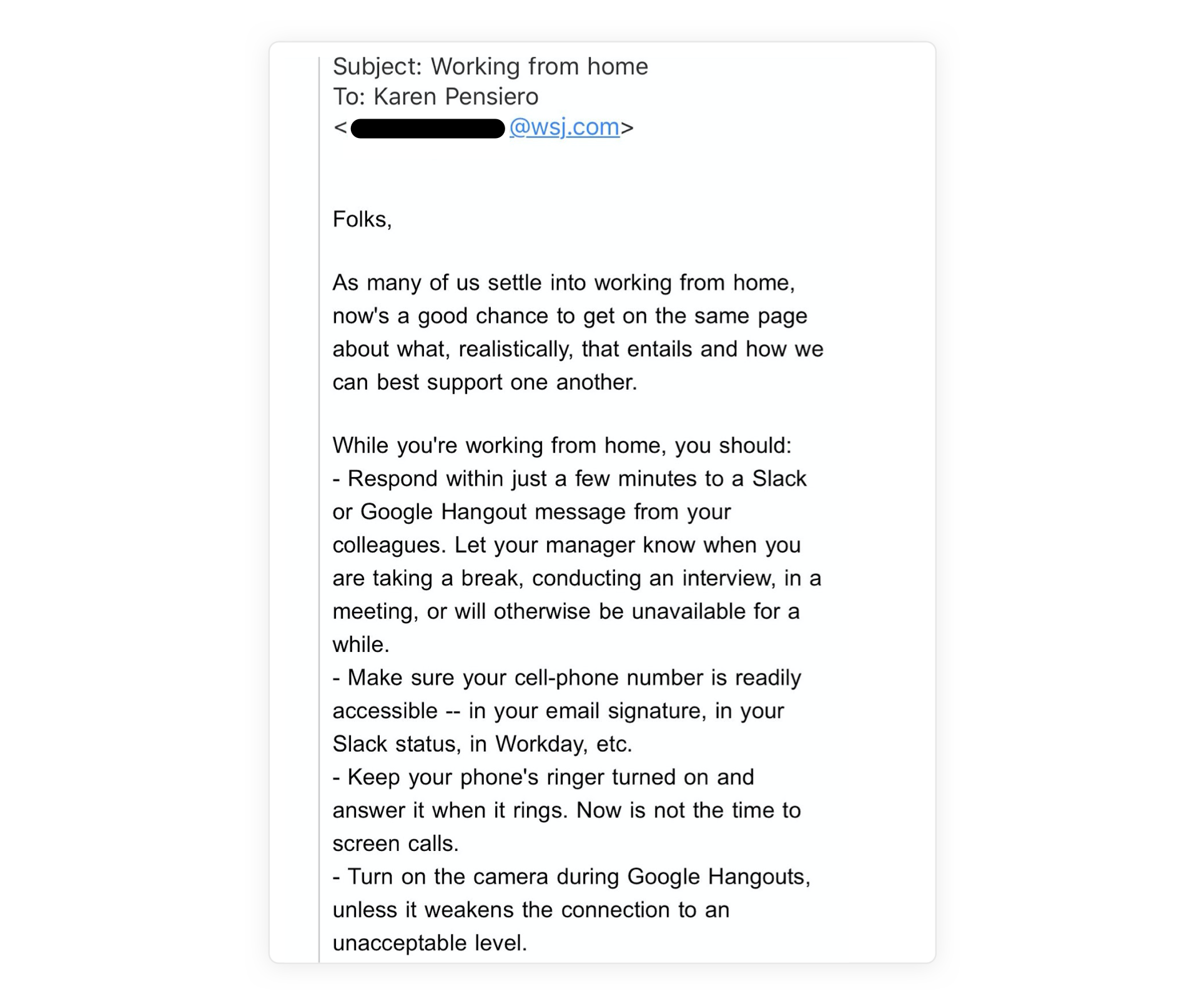
Instead, shift the focus to outputs — the results that actually create value for the company. For example, if it’s your employees’ job to code, let them code. Don’t pull them into multiple meetings a day or interrupt them with messages they need to reply to immediately. Help your people identify their highest impact tasks and then encourage them to block off uninterrupted time in their calendars to focus on getting that work done.
Work with your team to come up with individual goals and “scorecards” to measure their success. Tailor these for each team member and align individual goals with overarching team and company goals. Clearly articulated goals and priorities eliminate ambiguity and set everyone up to focus on their most important work. Yes, this way of measuring productivity involves a lot more effort and intention, but this kind of collaborative goal-setting is well worth the effort in keeping people engaged, motivated, and moving in the same direction.
Even if you’ve never officially stated that you expect people to quickly respond to messages throughout the workday, remote employees tend to worry that they need to “show they are working” by being active online, which will lead to a natural emphasis on inputs. Set explicit guidelines for how often you expect people to answer messages, and make sure it’s on the order of hours, not minutes.
Be aware of burnout, anxiety, and loneliness
Remote workers — especially new remote workers — tend to work longer hours, take fewer vacations, and feel more isolated than office workers. Blurry boundaries between work and life and a desire to prove they’re being productive keep people working way past the point of sustainable productivity.
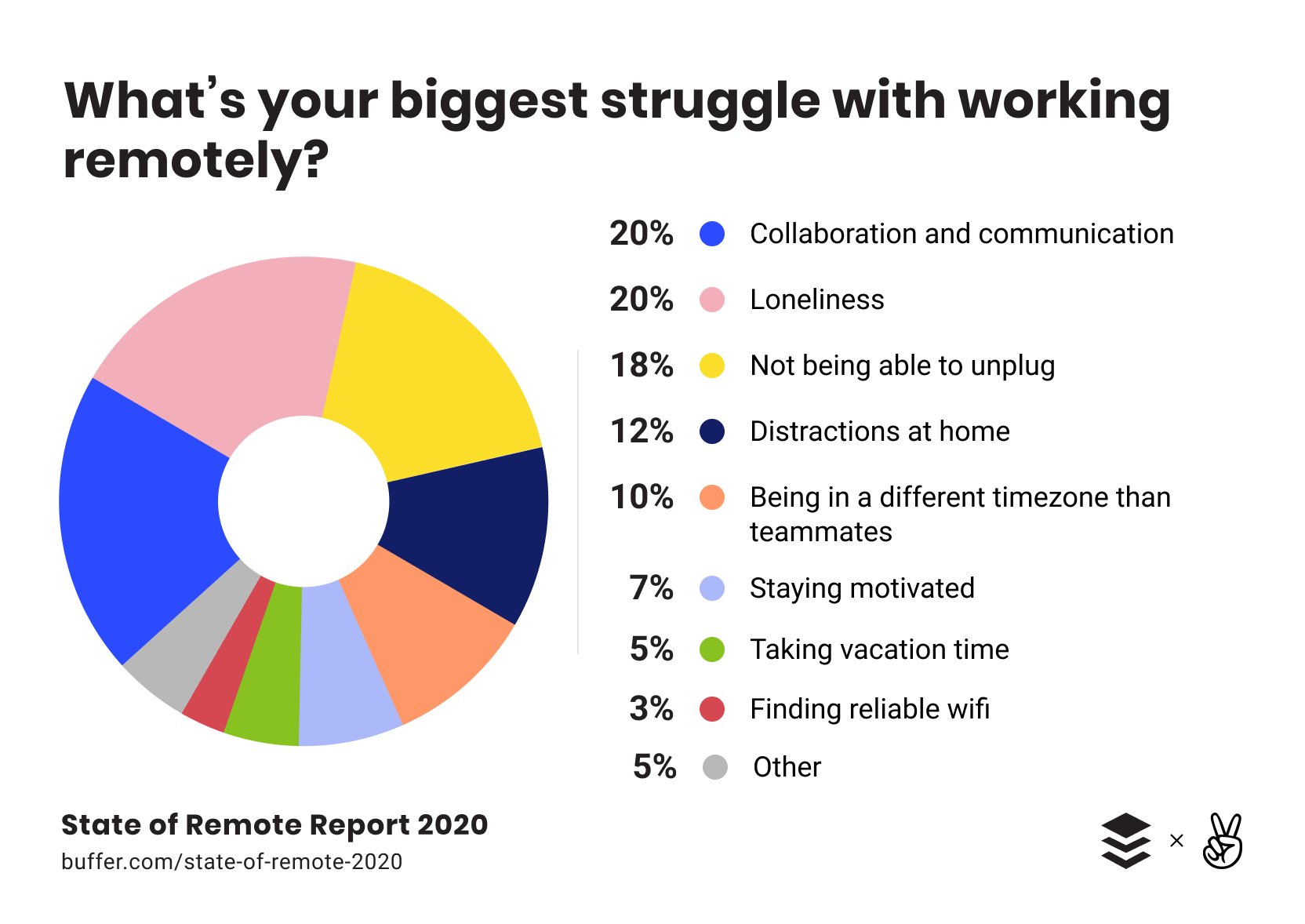
In my experience, this is the biggest downside to remote work. While we can’t mitigate every aspect of this, as managers, we can promote a way of working that will minimize the negative effects. Here are a few thoughts on how to do this:
- Encourage disconnection from work. Let your team know that lunch breaks are still expected, and encourage them to turn off work notifications at the end of the workday. Don’t send or respond to messages at odd hours. Share how important it is for you to personally set boundaries for working and non-working hours. They will follow your lead!
- Don’t praise the “early birds” or those “burning the midnight oil”. Normal working hours offer plenty of time to get the job done. By celebrating those who are putting in extra time, you create an environment where overworking becomes the rule and not the exception.
- Don’t expect immediate responses from your team. Don’t default to using presence indicators, read receipts, and other such tools with these features that aim to “prove” someone is working. Remember: outputs over inputs.
- Encourage social activity. Consider a group chat for fun or a weekly virtual social gathering via Zoom or Hangouts. Create a topic to discuss that’s not work-related.
Here are a few ways we create and maintain social connections at Doist:
- Once per month we host “casual hangouts”. We’re randomly assigned to groups of four, and we meet for 30 minutes to an hour of chit-chat over Google Hangouts. Some pre-prepared, non-work topics give us a place to get the conversation started,and we share a screenshot group selfie with the entire team afterwards.
- In Twist we’ve created social channels like #Travel, #Parenting, #Bookclub, and #Crossfit alongside our work channels. These offer us places to “meetup” with colleagues with similar interests, share ideas, and support each other.
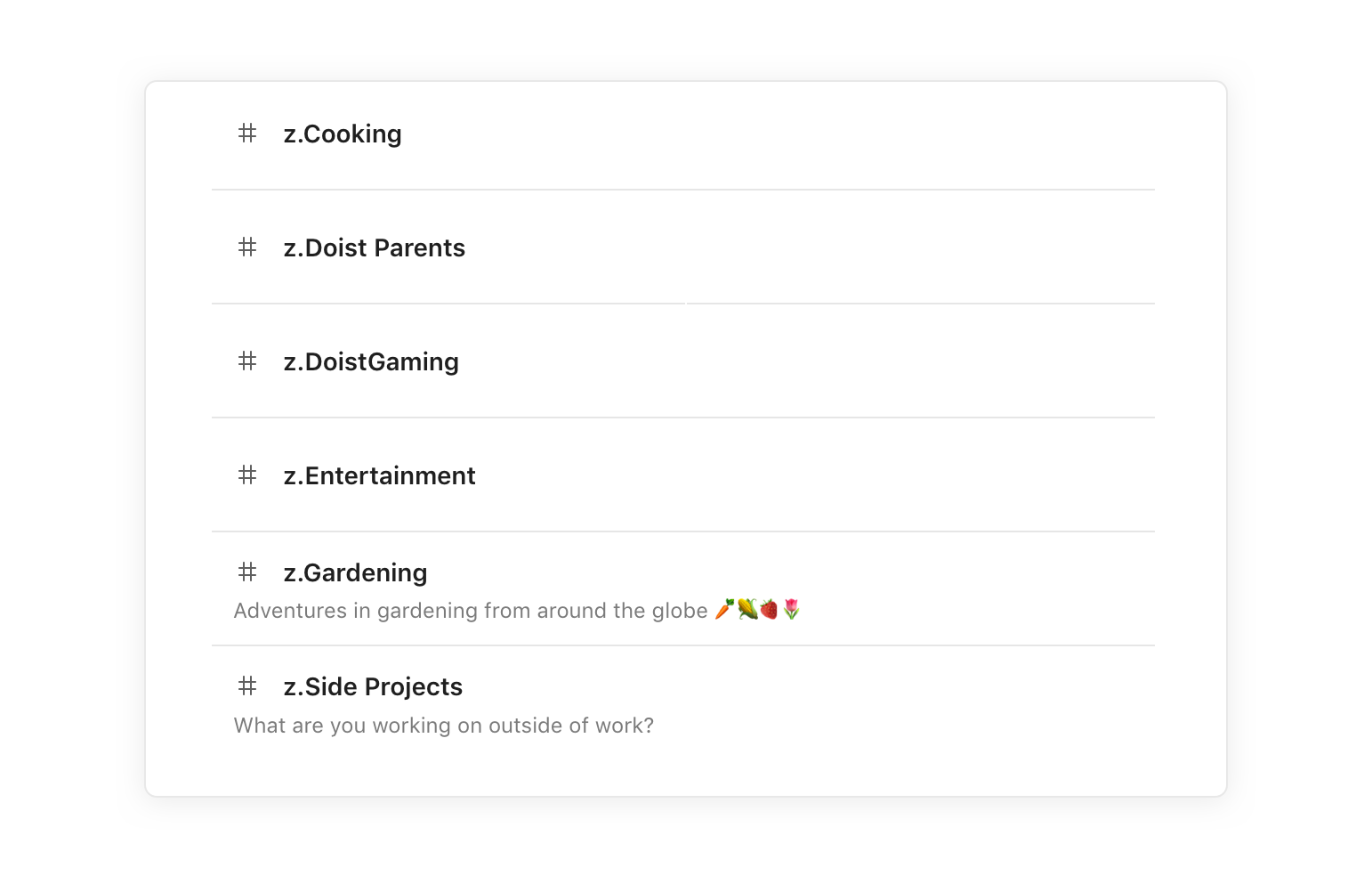
- We have a full-team group message in Twist that we call “Generalist”. This acts as our virtual water cooler and is where we drop random ideas, articles, current events, and exciting announcements. Often some very funny conversation is sparked here, like when David provides live commentary for Apple events. There’s zero obligation to check this, and no important information lives here, it’s just for fun.
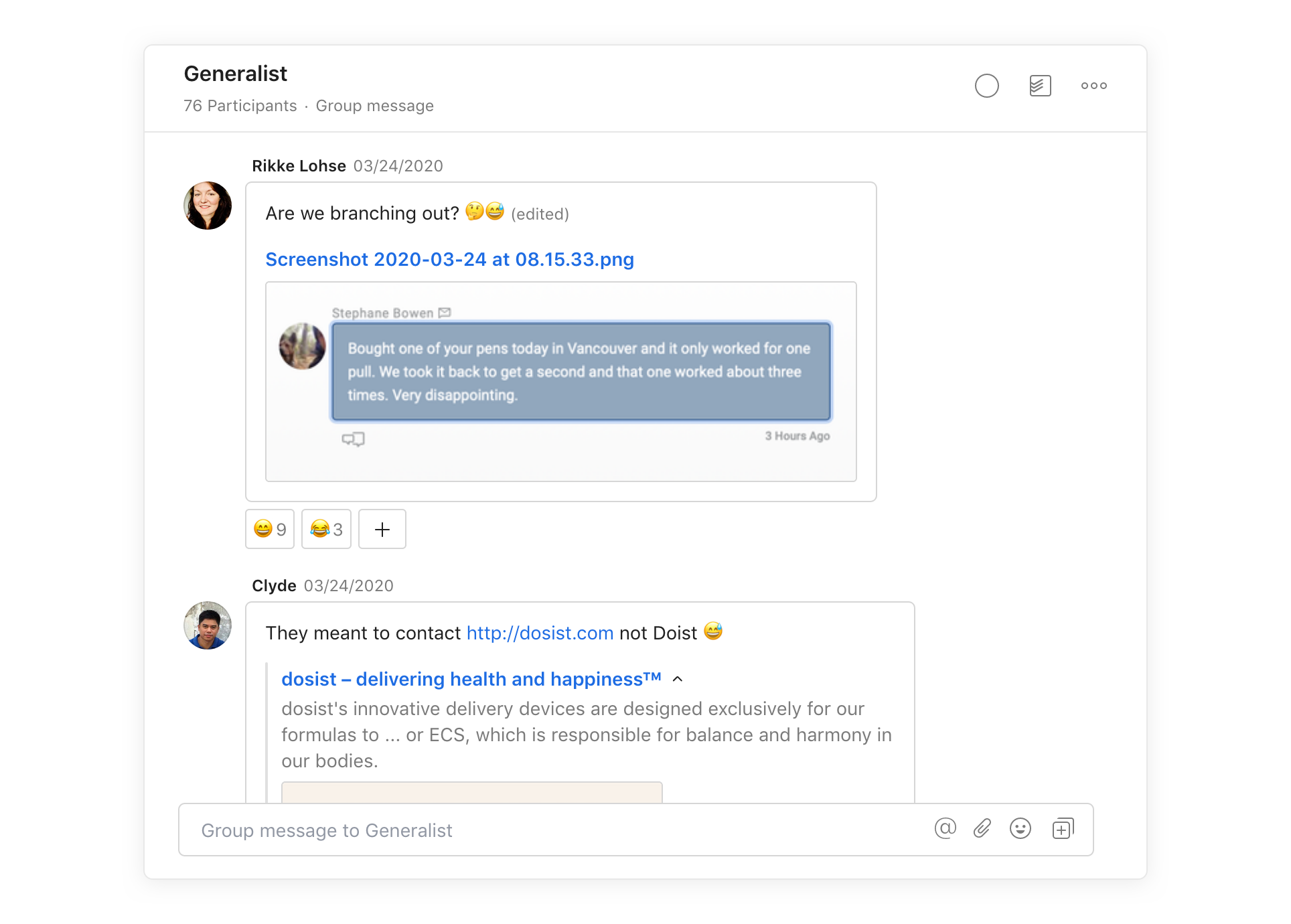
Replace meetings with async communication
In the office, it’s easy to drop by a colleague’s desk for a quick clarification or gather a group in a conference room for a team huddle. Attempting to replicate these kinds of impromptu in-person interactions in a remote environment is time-consuming to organize and can quickly take over the workday.
Instead of trying to recreate the real-time interactions of the office, help your team make the shift to asynchronous communication — in writing or even in recorded video.
Consider which meetings can be moved to a written format online. For example, do you have a daily or weekly standup meeting? Could this be done async-style by posting your updates in a dedicated channel? At Doist, we do this in our #DoistSnippets channel every Monday, collectively saving us countless hours.
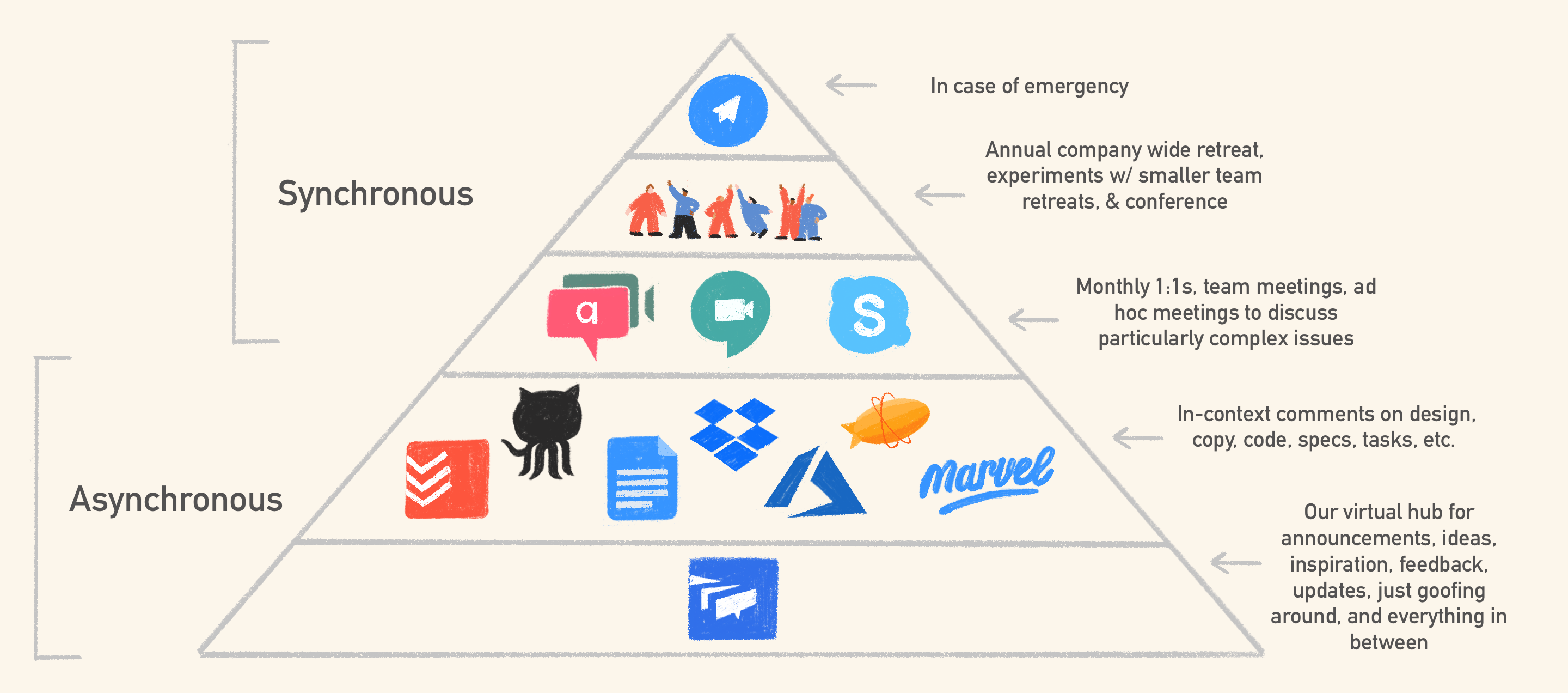
Even worse than over-scheduling meetings is trying to replace quick check-ins with real-time chat. Instead of saying, “hey, you there?” and waiting for a response, encourage your teammates to craft messages with as much information and context as possible so the other person can fully respond to their request. The more back-and-forths your team can eliminate in your written communications, the more efficient they’ll be.
Decentralize decision-making
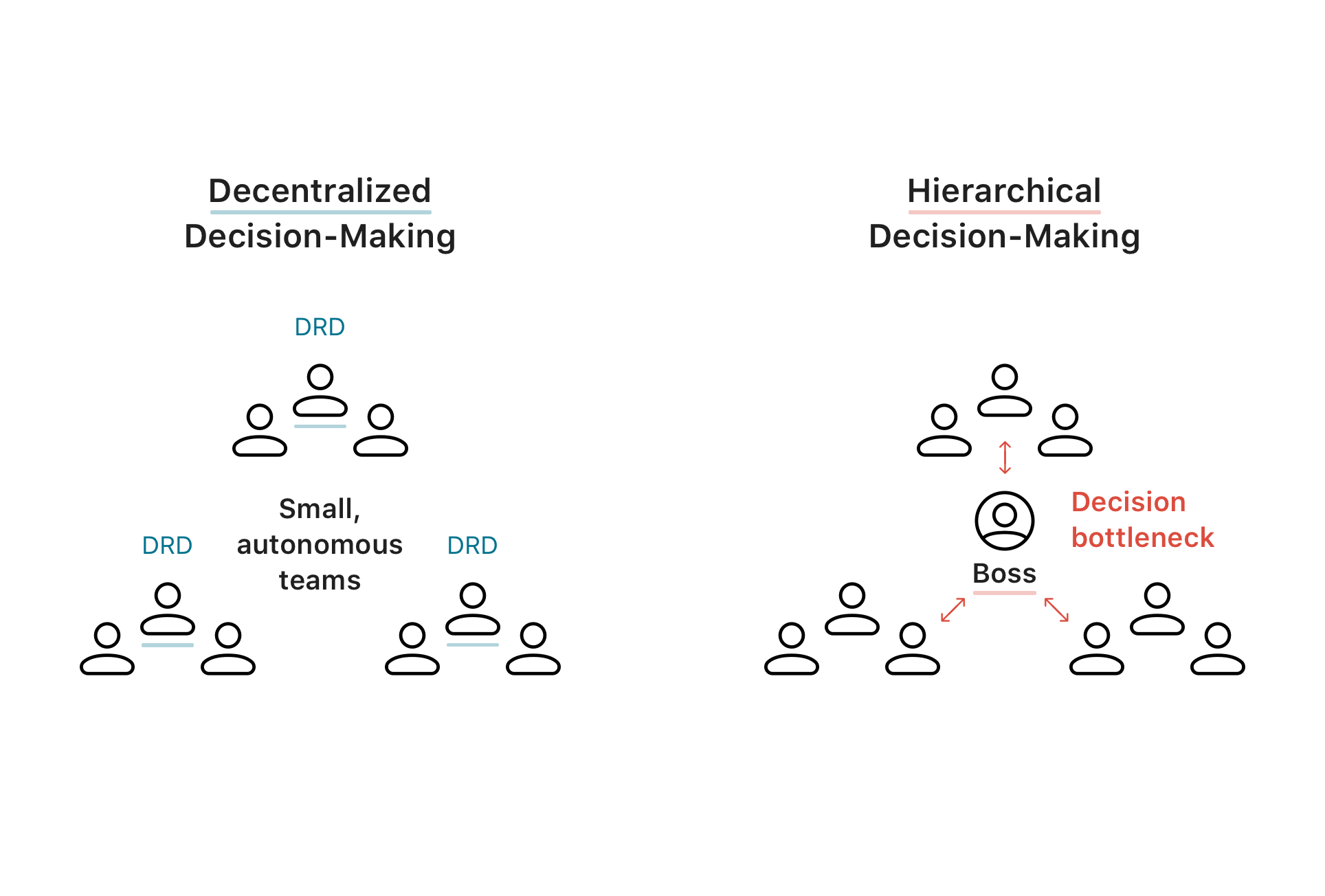
Another key way to minimize your team’s reliance on meetings is to delegate decision-making power as much as possible. When decisions require a meeting or explicit approval, projects grind to a halt.
At Doist we’ve adopted a concept we call DRDs (Directly Responsible Doister, adapted from Apple’s Directly Responsible Individuals). Every business area and project has a DRD, someone who “owns” that particular part of the product, service, business, or project. The DRD is responsible for moving the work forward and is the final decision-maker in a gridlock.
Decentralizing responsibility and authority leads to more engaged employees, faster decisions, and fewer meetings. Clear project ownership and decentralized decision-making means your remote team members can be more efficient and agile.
Get the most out of the meetings you do have
Of course, not all meetings are evil. When you do decide a virtual meeting is necessary, here are some ideas for getting the most out of them:
- Schedule regularly recurring meetings. Consider regularly scheduled 1:1s with your direct reports (e.g. once per week to once per month), and an all-hands meeting with your entire team (e.g. once per week to once per month). This will help you avoid the back and forth of scheduling impromptu meetings and give you a designated time slot to address all issues that do require some “face time”.
- Avoid saying yes to every request for an ad-hoc meeting. In the absence of an emergency, tell your team members to reach out to you asynchronously so you can respond when you’re not focused on deep work. If the matter still requires some face-time to come to a resolution, add it to the agenda for your next weekly/monthly meeting. Note: This is generally a good practice for all types of meetings. Jeff Bezos famously makes executives read 6-page memos before meetings. Meetings should be about making decisions, not getting everyone up-to-speed on the situation.
- Make sure every meeting has an agenda. We use Todoist to add emails, URLs, Twist comments, and other reference materials as tasks to each meeting agenda. Each recurring meeting has its own project, and prior to a meeting, all involved parties review the project and add items to the agenda. This ensures we’re all on the same page ahead of time and keeps us from wasting time once the meeting has started.
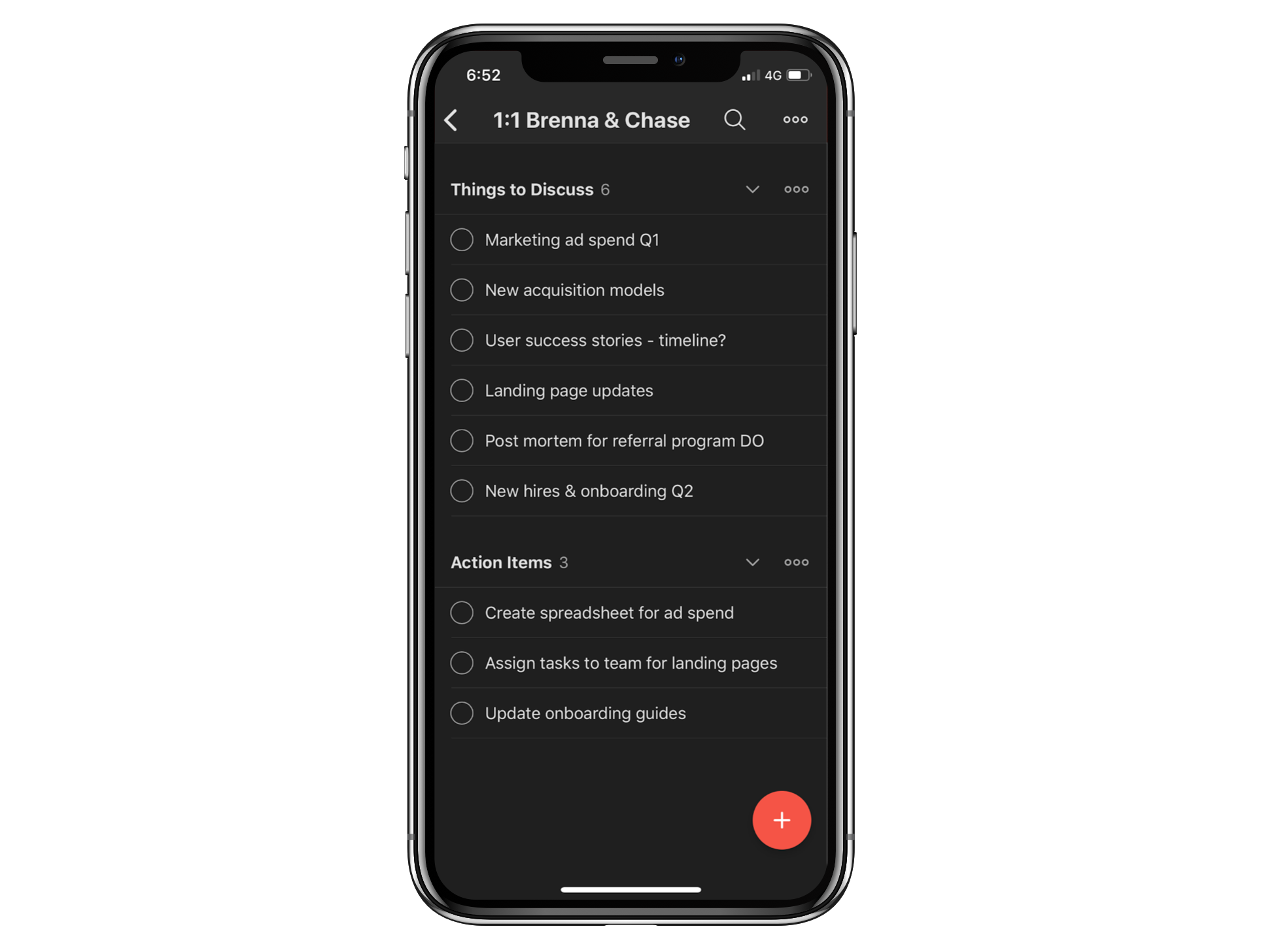
- Set a firm start and end time for meetings. I love Tim Ferriss’ advice from his book The Four-Hour Work Week: schedule meetings for weird numbers like 25 or 50 minutes. This sends the message that you really do only have that much time, so it better be used wisely.
- Minimize the number of people in meetings. Cut out anyone that doesn’t need to be there, and bow out if it turns out the meeting isn’t pertinent to you. For example, Elon Musk makes it clear that Tesla employees should feel comfortable leaving if they’re not providing value in a meeting.
- When meetings are necessary, we prefer Zoom. Generally there are fewer technical issues and if you’re on the free version, meetings are automatically cut off at 40 minutes so you have a hard stop time.
- Reduce the back-and-forth of meeting scheduling. There are a couple of apps I rely on to quickly find a time that works for everybody without a bunch of inefficient back-and-forths. For figuring out the best time for a group to get together, I prefer Doodle. For scheduling a meeting with one person, I prefer Calendly.
Promote transparency
When conversations are caught in private silos, like emails or instant messages, the cohesiveness your team felt in the office will quickly deteriorate. Try to keep conversations in public places where everyone can follow along. At Doist, the core of our team communication happens in public Twist threads where everyone can browse subject lines and follow conversations.
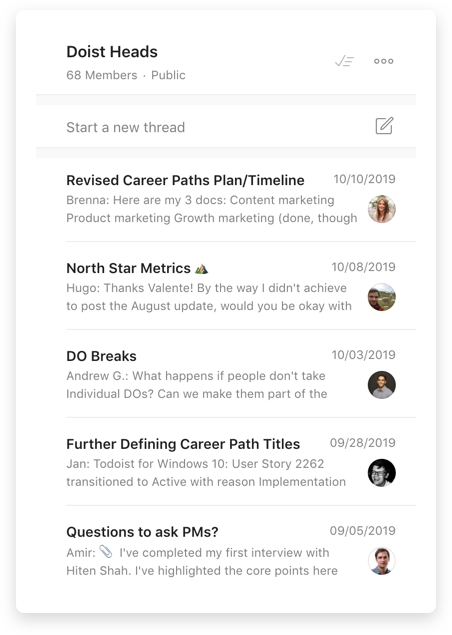
Whichever tool you choose, keep in mind that open conversations will keep your team invested and promote camaraderie, in addition to making it easier for people to find the information they need. As my colleague Becky recently said:
At Doist, I can see what’s going on and I feel involved and in the loop, even on things I’m not directly involved in. It makes me feel secure that there isn’t a lot of background politicking and decision-making happening that I’m being cut out of. I think that’s a big factor in why I feel so personally invested in the team. Plus, it just means I’m better at my job because I have more information and context.
Transitioning from an email and/or a face-to-face environment can be tricky, so here are a few key principles I suggest adopting:
- Practice mindfulness. Transparency doesn’t mean notifying everyone about everything. Consider who really needs to be notified. If it’s not essential to someone, do that person a favor and remove them from your “ping”.
- Drop the “reply all” mentality. In email chains, it’s commonplace to keep responding via “reply all”. A much higher percentage of your communication will now be digital as a remote team, so the ripple effects of cutting down on reply-alls will be massive! In a transparent tool, everything is public, and you can always notify someone if/when they need to be looped back in, so there’s no need to over-notify.
- Keep conversations topic-focused. Ruthlessly encourage people to create separate threads for each topic, and avoid letting conversations ricochet off into semi-related tangents. This is especially important when using a less organized chat tool as the cornerstone of your communication stack, where topics are discussed and then buried in an avalanche of other conversations.
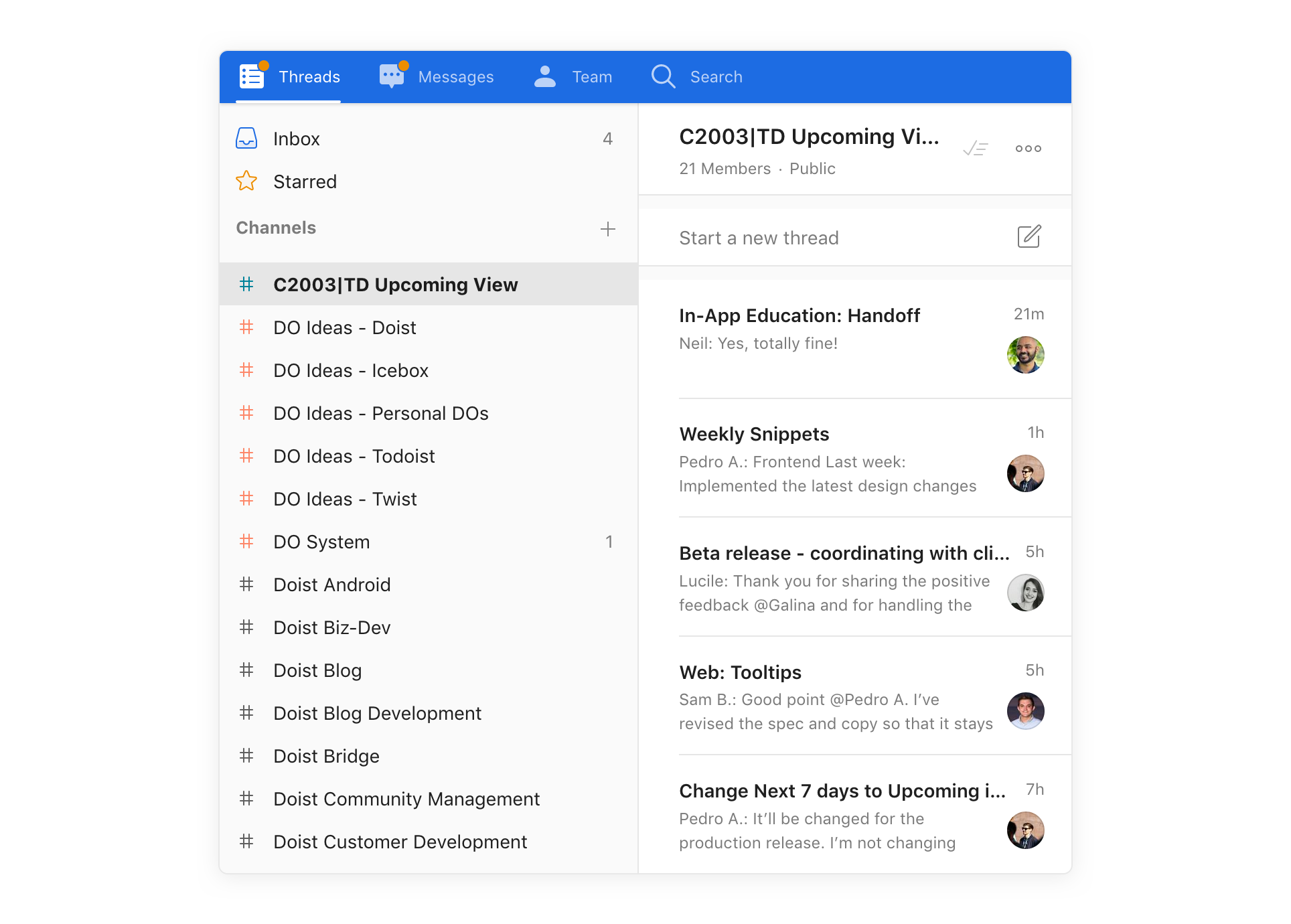
For anyone working from home
If you’ve found yourself working from home and feel a bit lost, this section is for you. While some of this advice will seem obvious, it’s so easy to ignore the small things that make a big difference. It took me at least 6 years of working remotely to understand the importance of some of the points below. Now that I’m forced back to working from home under quarantine, after being in a coworking space for the last several years, I’ve even found myself quickly falling back into bad habits.
Take some time to make these relatively easy adjustments for yourself, and they’ll pay dividends in the weeks and months to come.
Create a comfortable working setup
Your home has suddenly become your office, and there’s a very good reason we all typically have dedicated spaces to go to work every day. Spend some time and thought on creating a comfortable workspace for yourself.
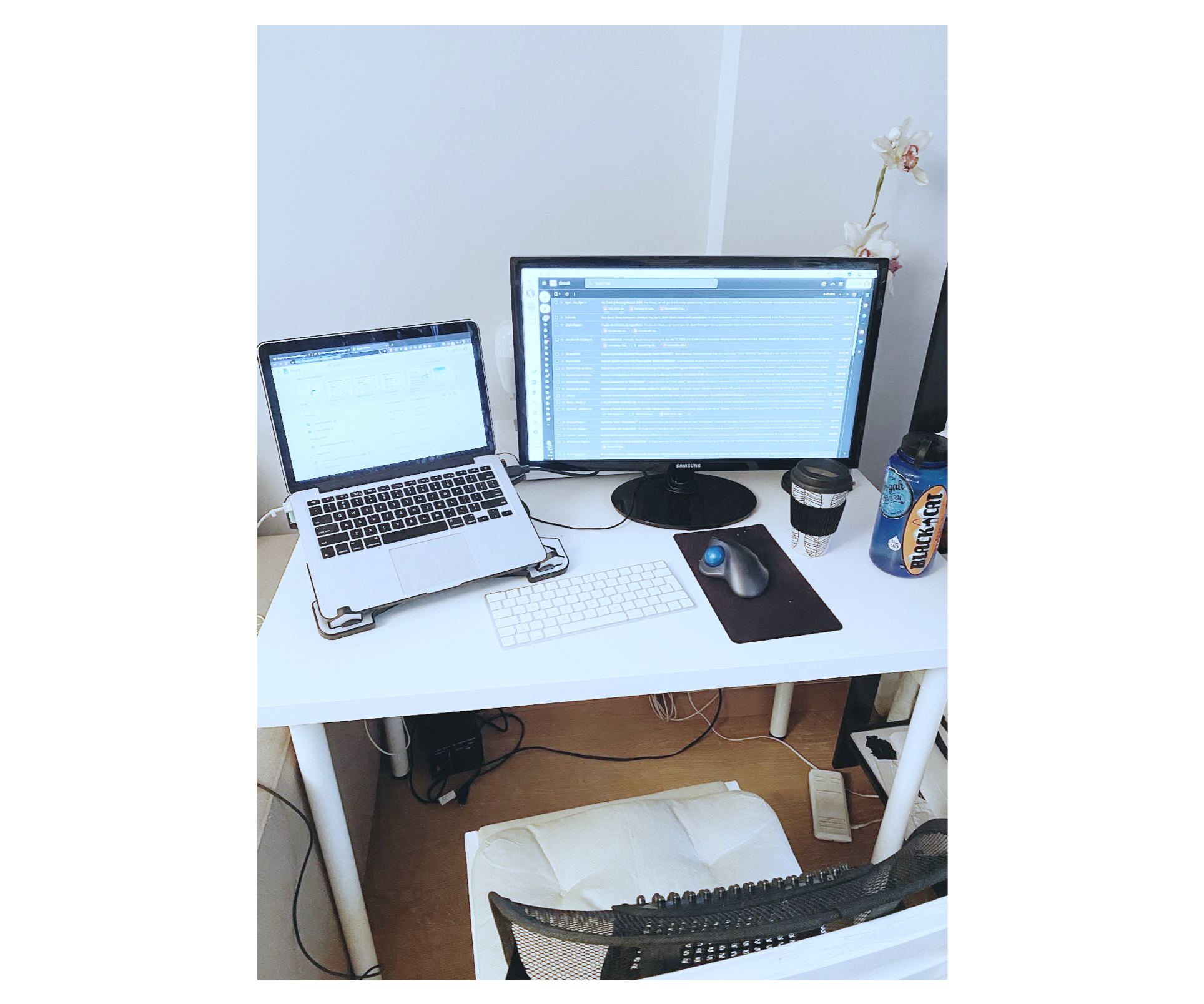
Some sacrifices may need to be made, but don’t let your workspace be the area of your life that gets sacrificed. Turn that guest room into a temporary office. Move the dining room table that gets used three times per year into a corner for your “office”. Invest in a cheap table or room divider to create some separation. Get creative!
A few additional thoughts on optimizing your physical workspace:
- Choose your work spot wisely. Try to separate yourself from the main areas where others in the house may congregate. Don’t set your workspace up in your bedroom, especially if your partner will still be in bed while you need to be working. If the kids come home and normally watch TV in the living room, don’t choose the living room. Or, consider moving the TV watching space to another room. Mix it up until you find a setup that works for you and your household.
- Have the right tools for the job. Consider bringing some of your office equipment home (e.g. a second monitor or office chair). Invest in a laptop riser and external keyboard and mouse, back support, or even a new desk.
- Avoid at-home productivity traps. Whatever you do, do NOT work from bed or the couch in front of the TV — it won’t work! Ergonomically you’ll find yourself in some pain, and from a productivity standpoint it’s a disaster.
I recognize this won’t be easy for everyone — and in some cases it will be impossible — but whatever your circumstances are, give some thought to how you’ll physically separate work from the rest of your life. You’ll spend around eight hours per day here, and being intentional about your setup from the beginning can go a long way.
Set boundaries with people too
Typically when you’re at home, it’s time to be together with the other members of your household. That’s not the case anymore. Be preemptive and make it clear what your working hours and expectations will be. This is especially true if your significant other is going to be home too. It’s very easy to fall into the “honey, can you just help me with this real quick?” trap 🙃 Set aside blocks of time to be social — lunch breaks and evening activities — and blocks of time for work.
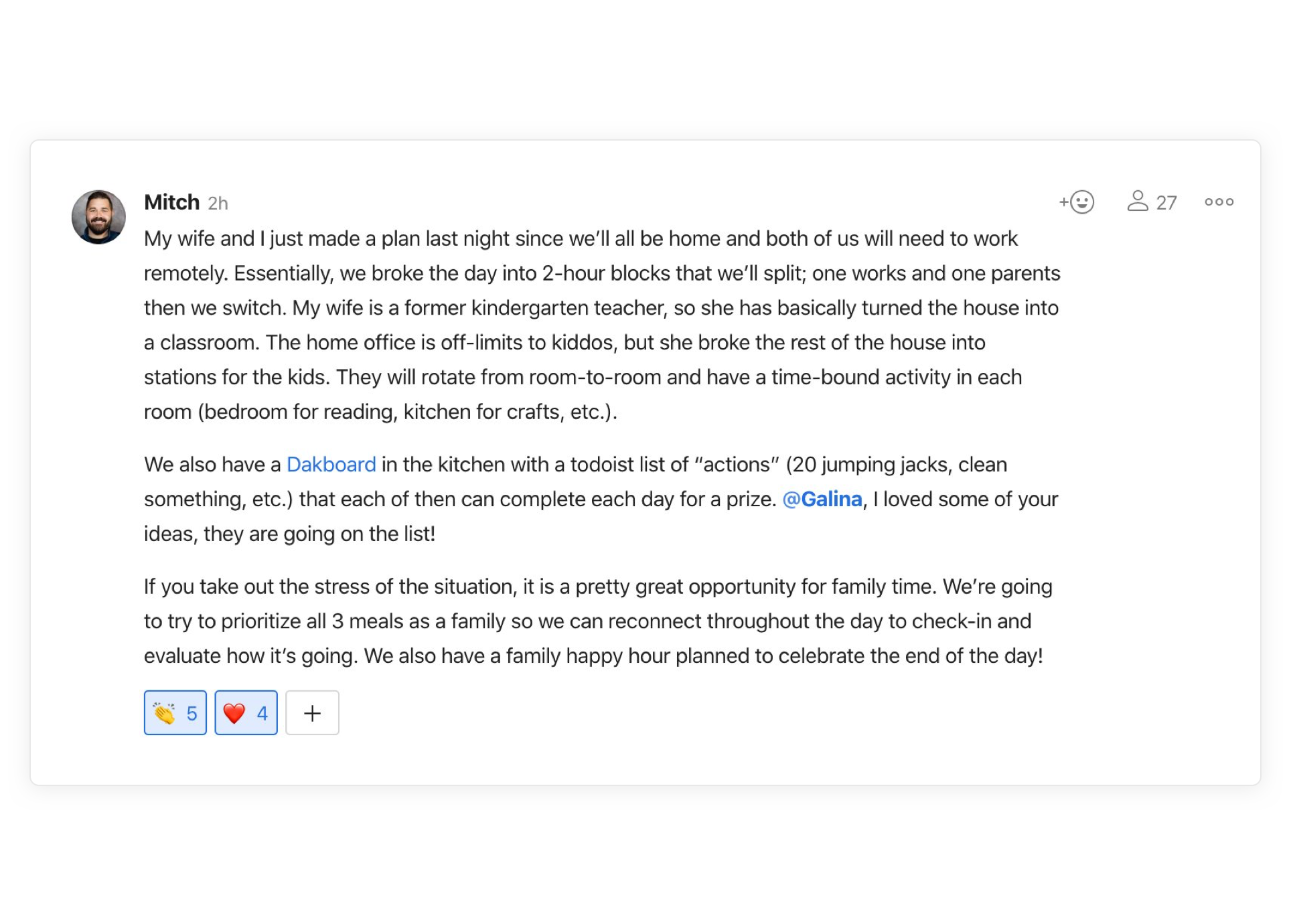
For people working from home alongside their partner — and especially parents working a full-time job and caring for kids stuck at home too — intentional communication is key. If your partner is working from home too, consider setting a calendar at the beginning each day or week to trade off 2-hr time blocks, as my colleague Mitch does with his wife (image).
You may also find this article by our Head of Marketing, on parenting while working remotely, helpful.
While kids, partners, and roommates can be big distractions, your biggest distraction may be yourself…
Protect yourself from yourself
You’re home now. Working while knocking off household tasks and watching TV is totally doable, right? Wrong. While studies show that remote workers get more done than their office-bound counterparts, staying productive while working from home can have a steep learning curve. It often feels like you’re your own worst enemy.
There are a few tools, methods, and self-imposed “rules” I’ve found useful for dealing with self-inflicted interruptions:
- Consider using a productivity method like time blocking or pomodoro to schedule your day and ensure you build in plenty of breaks to stay fresh. Breaks are absolutely necessary for staying focused and productive!
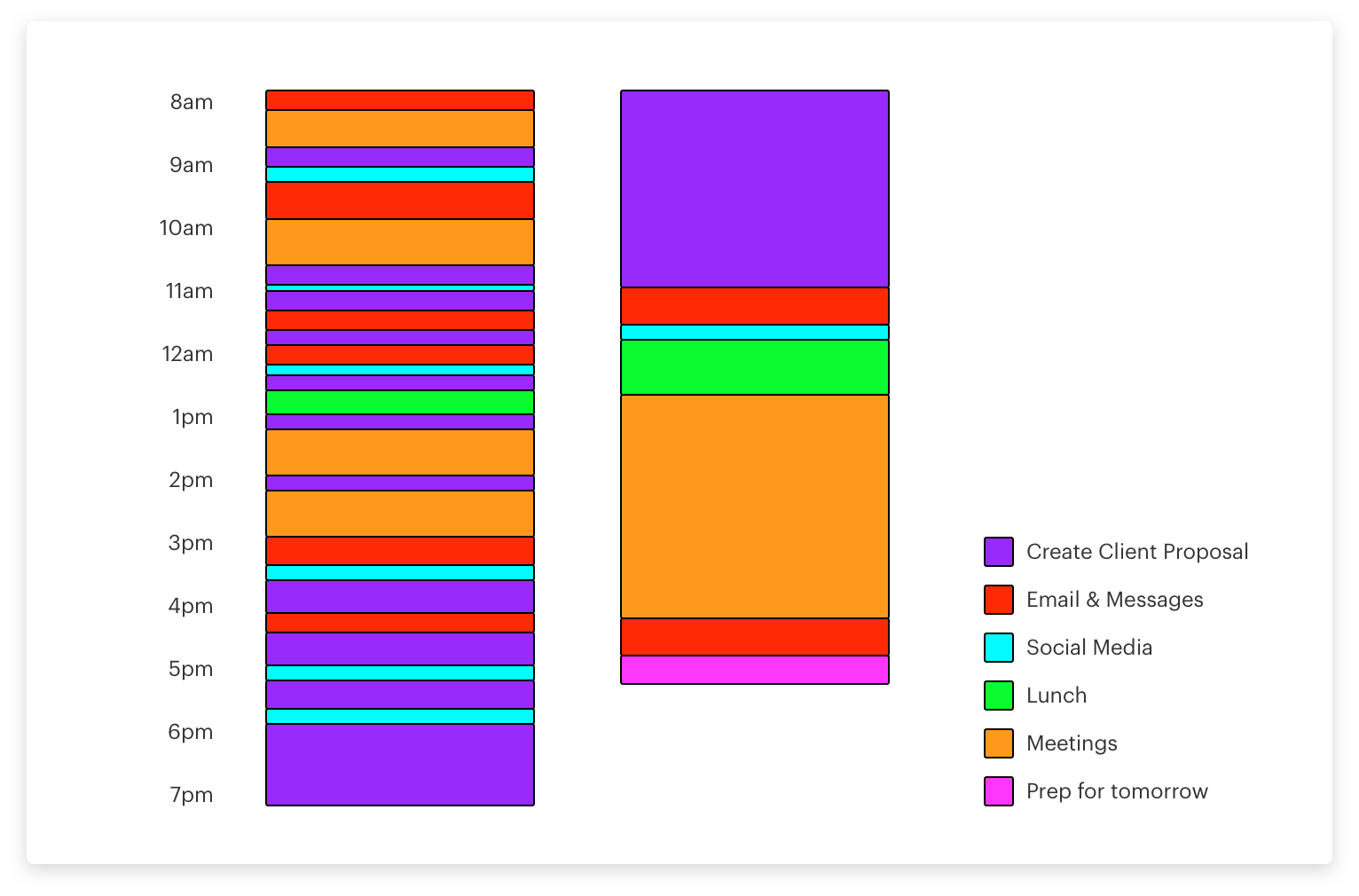
- When you do take a break, use that time for tasks you might have been tempted to do alongside your work (I’m looking at you: dog walker, kitchen cleaner, bed maker).
- Don’t use your breaks to check your phone. Do something offline so you can come back to your computer ready to refocus.
- Stay sharp and mimic a “real workday” by scheduling the types of breaks you’d normally take anyways. Maybe even schedule a virtual break with the coworker you usually grab a midmorning coffee with.
- When work is done for the day, fully disconnect just like you normally would (or at least know you should 😉). Work now lives where you live, and the activities you’d normally occupy your off-hours with are likely no longer possible, so separating the workday from the rest of your day is even harder. Hint: this is much easier if you have a dedicated workspace you can “leave” when work is finished. Here are some more tips for how to leave work at work at the end of the day.
- Consider turning off, or at least cutting back on, your notifications from distracting sites and social media. Personally, I have ALL notifications turned off, both work and personal. Context switching is one of the main productivity killers, so the more temptations you can remove entirely, the better.
- If you find yourself struggling with these distractions, consider using an app like Freedom to eliminate digital distractions during working hours.
Don’t change anything on race day
Runners don’t train for 6 months in one pair of shoes and then switch to that shiny new pair on the day of the race (a recipe for supreme discomfort and disappointment)! The same is true for you in your new work settings.
Try to maintain your daily routine as much as possible. Wake up at the same time, shower like you normally would (still very important even if you work from home!), take your normal breaks throughout the day, stop for lunch. If you take nothing else from this article, remember to actually get dressed for work, before starting work! You’ll be surprised how much more efficient you are when you aren’t in your bathrobe and slippers.
Don’t suddenly raise your expectations for the amount you can accomplish. New remote workers tend to feel like they have so much more time in a day. But that doesn’t mean you have to occupy those hours with more “stuff” to do. Enjoy the time you’ve saved by eliminating your commute, don’t fill it with more obligations.
Pay yourself first
This idea is from one of the most impactful books I’ve ever read: The Automatic Millionaire. The concept behind the book is to first pay yourself, then come back to pay your obligations. For instance, set money aside for your retirement or other savings goals first — then pay your rent (landlord), mortgage (bank) or cable bill (cable company). Yes, this advice is about personal finances, but I’ve found it applies to the way you spend another limited resource: your time.
In the case of your time, work is your obligation. It’s going to get done one way or the other. Unfortunately, when working from home it’s easy to jump right into work in the mornings, stay connected all day — right into the evening, and never “pay yourself”. I was guilty of this early in my career, so I started defining my personal “non-negotiables”: What are the things I must make time for, before focusing on work?
For me, these are 3 simple things I make sure to “pay myself first”:
- Read or listen to something for pleasure.
- Enjoy, truly enjoy, a good cup of coffee.
- Take my dog on a walk/jog.
I’ve found that if I do these three things, I start work without the guilty feeling that my pup is bored all day, I’ve gotten some fresh air, and I’ve already done two things that I truly find enjoyable. What a great start! I’ve paid myself, and now I can pay the company.
What are your non-negotiables? If you want to define them, a few tips I would suggest:
Don’t have more than 2-3 of these
- They should be relatively small items. Don’t ask too much of yourself.
- They should not be dependant on anyone else. Only you have control of this, so there are no excuses for not doing them.
- They should be clearly defined (did I do this, yes or no?)
Find ways to disconnect
Finally, and, in my opinion most importantly, make sure that when work is done, it’s truly done. This took me years to learn, but fully disconnecting from work is super important for your long-term productivity, not to mention your mental health. Now that you essentially live in your office, it’s going to be more tempting than ever to hop back online and respond to “just one more email”. Avoid this trap. When the day is over, disconnect completely and agree to not start again until the next day.
Create an appointment for something at the end of the workday to clearly divide your work from personal life. Schedule a walk, virtual happy hour with friends, an at-home fitness class, finger-painting with your kids — whatever! Put it on your calendar and consider it just as important as any other obligation you have for the day. I like to consider this my last task for the day, and literally check it off when I’ve done it. This feels great and is a way to set “tomorrow me” up for success by giving my mind time to relax.
Side note: if you’re in quarantine this can be more difficult, so we have to get creative. I’ve made a few adjustments in my life to make this easier:
- I created a Calendly event called “Grab a coffee/wine/beer” and sent it out to some of my friends and family. They can book a 1-hour slot and we’ll both show up to a Zoom meeting with a beverage of choice, video chat for an hour, and then move on with our day. Try scheduling something like this around the time you plan to finish up work to force yourself to stop.
- Consider scheduling a game hour with friends. I was recently introduced to House Party, an app that facilitates playing games and socializing with your friends virtually.
- If you’re in need of some exercise, try to find options available online. My local gym is customizing workouts which can be done from home without equipment, and sending them to us daily. If you need ideas, there are tons of options out there! A friend of mine put together a great set of online resources available to keep you fit from home.
- My wife and I are planning date nights, quarantine style. We have “reservations” for a tapas dinner at 7:00pm this Friday — better not be late!
Here are a few additional rules I’ve set for myself to help me disconnect:
- No working from bed (this was a major game changer for me)
- Snooze notifications on work apps at the end of the day. I actually go a step further and log out of my main work apps (Twist, email, etc) to remove the temptation entirely. Otherwise, I find that muscle memory all too often takes me to my team’s communication apps when I pick up my phone at night.
- Close all work tabs in my browser. This way, if I go to open Netflix or something personal in the evening, I won’t see something work related and be tempted to jump back in.
Again, none of this is rocket science, but it’s important that we take some time to adapt to our new reality. Preemptively tackling the challenges of working from home head on and being intentional about optimizing for your new situation — for your team and for yourself — will pay countless dividends over the coming weeks and months. You may even find yourself taking a few of these lessons back to the office when all of this is over.
I truly hope you found this information useful, and I’d encourage you to keep the questions, concerns, and ideas coming in the comments below. What remote work challenges are you still facing and how are you dealing with them?
Alternatively, we’ve also just announced Doist Office Hours. If you’re feeling the need for a bit of 1-on-1 time to discuss your remote work challenges, reserve some time with me or one of my colleagues and we’ll tackle this together!

